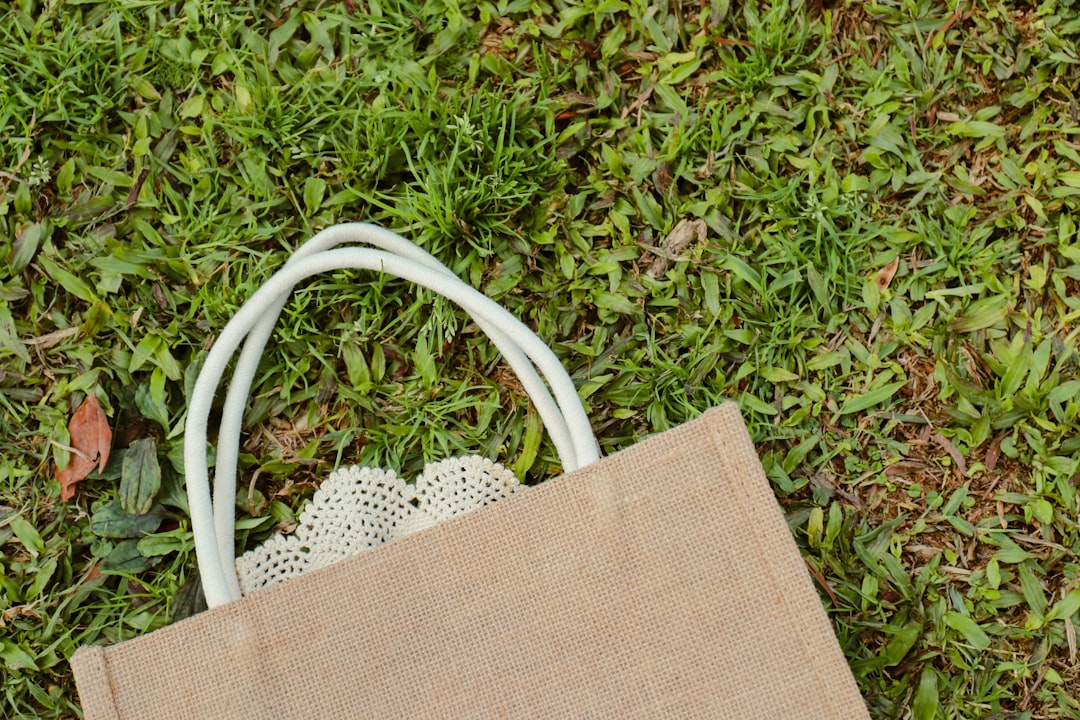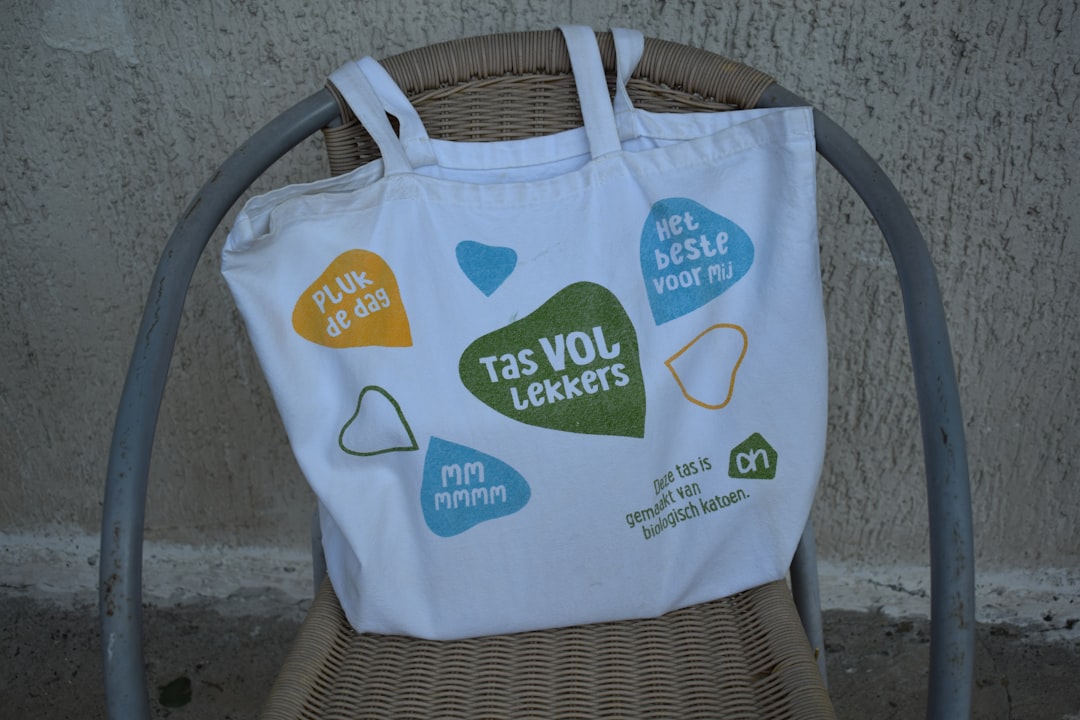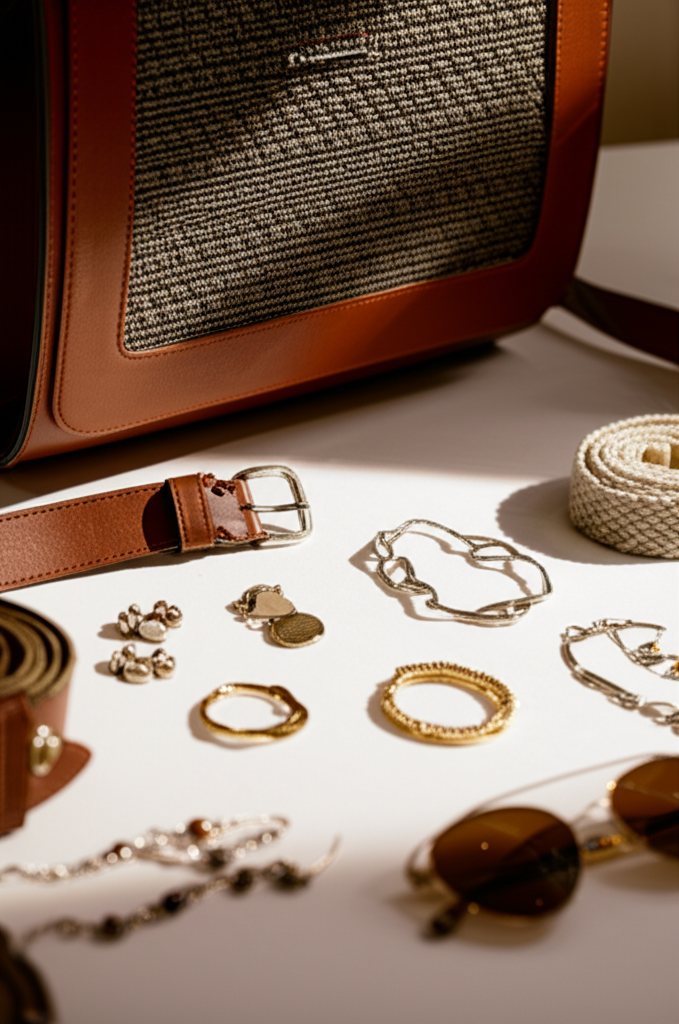Support our educational content for free when you purchase through links on our site. Learn more
Can Handbags Be Recycled? 7 Must-Know Facts for 2025 ♻️👜

Ever wondered what really happens to your old handbag once it’s past its prime? You’re not alone! At Purse Brands™, we’ve heard countless stories from fashion lovers torn between tossing their beloved bags and wanting to do right by the planet. Here’s a little secret: handbags can be recycled—but it’s not as simple as tossing them in your curbside bin. From tricky leather treatments to innovative upcycling programs, the journey of a handbag after you’re done with it is full of surprises.
Did you know that millions of handbags end up in landfills every year, contributing to textile waste that takes decades to decompose? But don’t worry—we’ll walk you through everything you need to know about recycling handbags in 2025, including which materials are recyclable, how to prepare your bag, and where to take it. Plus, we’ll reveal the brands leading the charge in sustainable handbag recycling. Ready to turn your old purse into a planet-friendly hero? Let’s dive in!
Key Takeaways
- Handbag recyclability depends heavily on materials: canvas and cotton recycle easily, leather is more challenging.
- Specialized recycling programs and store drop-offs (like Trashie.io and How2Recycle) make recycling handbags more accessible.
- Upcycling and donating are often better eco-options than simply recycling or discarding.
- Leading sustainable brands like Patagonia, Stella McCartney, and Rag & Bone are innovating with recycled and vegan materials.
- Proper preparation (cleaning, removing hardware) is essential before recycling or donating your handbag.
Ready to shop eco-friendly? Check out these sustainable handbag brands:
- Patagonia Bags: Amazon | Patagonia Official
- Matt & Nat Vegan Leather: Amazon | Matt & Nat Official
- Stella McCartney Vegan Bags: Amazon | Stella McCartney Official
Table of Contents
- ⚡️ Quick Tips and Facts About Recycling Handbags
- 👜 The Lifecycle of Your Handbag: From Purchase to Recycling
- ♻️ Can Handbags Really Be Recycled? Materials and Methods Explained
- 1. How Different Handbag Materials Affect Recyclability
- 2. The Role of Leather in Handbag Recycling: Challenges and Solutions
- 3. Recycling Synthetic and Fabric Handbags: What You Need to Know
- 4. Upcycling vs. Recycling: Creative Ways to Give Your Handbag a Second Life
- 5. Store Drop-off Programs for Handbag Recycling: Where and How
- 6. Brands Leading the Way in Sustainable Handbag Recycling
- 7. How to Prepare Your Handbag for Recycling or Donation
- 🌍 The Environmental Impact of Recycling Handbags: Why It Matters
- 💡 Common Myths and Misconceptions About Handbag Recycling
- 🔧 DIY Repair and Maintenance Tips to Extend Your Handbag’s Life
- 📦 What Happens to Handbags After You Recycle Them? The Recycling Process Unveiled
- 🛍️ Where to Donate or Sell Your Old Handbags Instead of Recycling
- Conclusion: The Future of Handbag Recycling and Sustainable Fashion
- Recommended Links for Handbag Recycling and Sustainability
- FAQ: Your Burning Questions About Handbag Recycling Answered
- Reference Links and Resources for Further Reading
⚡️ Quick Tips and Facts About Recycling Handbags
Welcome to the ultimate guide on whether handbags can be recycled! At Purse Brands™, we’ve seen the fashion world evolve, and sustainability is no longer a buzzword—it’s a necessity. If you’re wondering how to responsibly part ways with your beloved bags, you’re in the right place. Here are some quick nuggets before we dive deeper:
- ✅ Many handbags are recyclable, depending on their materials (leather, canvas, synthetics).
- ❌ Not all local recycling centers accept handbags—check first!
- ♻️ Specialized recycling programs and store drop-offs exist for certain handbag materials.
- 👜 Upcycling and donating are often better eco-friendly options than tossing bags in the trash.
- 🌍 Recycling handbags reduces landfill waste and supports circular fashion.
For a deeper dive into eco-friendly bag options, check out our article on What Type of Bags Are Truly Eco-Friendly? 7 Must-Know Options (2025) 🌿.
👜 The Lifecycle of Your Handbag: From Purchase to Recycling
Ever thought about the journey your handbag takes? From the moment you pick it up in a store to the day you decide it’s time to say goodbye, your bag has a story. Understanding this lifecycle helps us appreciate the importance of recycling.
The Lifecycle Stages
- Manufacturing: Materials sourced (leather, canvas, synthetics).
- Usage: The bag’s functional life, which can span years with proper care.
- End of Life: When the bag is no longer wanted or usable.
- Disposal Options: Donation, resale, upcycling, or recycling.
Knowing this helps you make smarter choices about your handbag’s fate. For example, extending your bag’s life delays its entry into the waste stream, reducing environmental impact.
♻️ Can Handbags Really Be Recycled? Materials and Methods Explained
So, can your handbag actually be recycled? The answer is a cautious yes, but it depends heavily on the material composition and local recycling capabilities.
What Makes a Handbag Recyclable?
- Leather: Natural but tricky to recycle due to tanning chemicals.
- Canvas and Cotton: Easier to recycle through textile programs.
- Synthetic Materials (PVC, PU, Nylon): Some can be recycled, but often require specialized facilities.
- Hardware (zippers, clasps): Usually removed before recycling.
Recycling Methods
- Mechanical Recycling: Shredding and reprocessing fibers/materials.
- Chemical Recycling: Breaking down materials into raw components (more common for synthetics).
- Upcycling: Transforming old bags into new products without breaking down materials.
The key is to separate materials and find the right recycling stream. Many curbside programs don’t accept handbags, but specialized programs do.
1. How Different Handbag Materials Affect Recyclability
Let’s break down handbag materials and their recyclability ratings (scale 1-10):
| Material | Recyclability Rating | Notes |
|---|---|---|
| Natural Leather | 3 | Difficult due to tanning chemicals; limited programs. |
| Vegan Leather (PU) | 5 | Some programs accept; often downcycled. |
| Canvas/Cotton | 8 | Widely accepted in textile recycling. |
| Nylon/Polyester | 6 | Accepted in some textile and plastic recycling. |
| PVC | 2 | Challenging due to toxic additives. |
| Mixed Materials | 1 | Hard to recycle without separation. |
Leather: The Tough Nut to Crack
Leather’s tanning process introduces chromium and other chemicals making it hard to recycle in conventional ways. Some brands like Rag & Bone and Stella McCartney are pioneering leather recycling programs, but these are still niche.
Canvas and Cotton: The Recycling Champions
Natural fibers like cotton and canvas are much easier to recycle. Textile recycling centers often accept these, turning them into insulation, rags, or new fabrics.
Synthetics: A Mixed Bag
Synthetic materials like nylon and polyester can be recycled but require specialized facilities. For example, Patagonia uses recycled nylon in some bags, showing the potential of synthetic recycling.
2. The Role of Leather in Handbag Recycling: Challenges and Solutions
Leather is synonymous with luxury handbags, but it’s also the biggest recycling headache.
Why Is Leather Hard to Recycle?
- Tanning Chemicals: Chromium and other substances make leather non-biodegradable and toxic if incinerated.
- Mixed Layers: Leather bags often have linings, adhesives, and hardware complicating recycling.
Innovative Solutions
- Chemical Recycling: Some companies are experimenting with breaking down leather chemically to reuse fibers.
- Upcycling: Brands like Rag & Bone offer programs to repurpose leather scraps into new products.
- Donation: Leather bags in good condition can be donated to charities or thrift stores for reuse.
Our Take
While leather recycling is limited, upcycling and donation are your best bets to keep leather handbags out of landfills. Check out our Sustainable Handbag Brands for eco-conscious leather alternatives.
3. Recycling Synthetic and Fabric Handbags: What You Need to Know
Synthetic and fabric handbags are more promising candidates for recycling.
Fabric Bags: Textile Recycling Programs
- Many municipal textile recycling programs accept fabric bags.
- Bags should be clean and free of hardware.
- Programs like Trashie.io’s Take Back Bag accept bags for recycling and reuse (more below).
Synthetic Bags: Plastic Recycling Challenges
- Some synthetics like nylon and polyester can be recycled mechanically or chemically.
- PVC bags are problematic due to toxic additives.
- Always check local recycling guidelines or brand take-back programs.
4. Upcycling vs. Recycling: Creative Ways to Give Your Handbag a Second Life
Sometimes, recycling isn’t the only or best option. Upcycling can be a fun, creative, and eco-friendly alternative.
Upcycling Ideas
- Turn old bags into wallets, pouches, or keychains.
- Use fabric bags as planters or storage organizers.
- Donate to artists or crafters who repurpose materials.
Benefits of Upcycling
- Saves energy compared to recycling.
- Keeps materials in use longer.
- Adds a personal, creative touch to your belongings.
We love seeing how our readers transform their old bags—share your stories with us!
5. Store Drop-off Programs for Handbag Recycling: Where and How
Wondering where to take your old handbag for recycling? Here’s the scoop on store drop-off programs, especially in the US.
What Is Store Drop-off Recycling?
- A system where consumers bring recyclable items to participating retailers.
- Commonly used for plastic bags and wraps, but some programs accept handbags or textile items.
US Store Drop-off Highlights
- Available only in the United States.
- Look for the How2Recycle Store Drop-off label on packaging.
- Participating stores include Target, Walmart, and grocery chains.
Handbags and Store Drop-off
- Most store drop-offs focus on plastic films, but some accept textile accessories like handbags.
- Trashie.io’s Take Back Bag program is a great example: you fill a bag with textiles and accessories (including handbags), ship it via UPS, and earn rewards.
- Items are sorted for reuse or recycling into fibers for pet bedding, insulation, or new textiles.
Pro Tip: Always clean your handbag before drop-off and remove non-fabric parts.
6. Brands Leading the Way in Sustainable Handbag Recycling
Some brands are trailblazers in handbag recycling and sustainability. Here are a few shining stars:
| Brand | Sustainability Initiatives | Highlights |
|---|---|---|
| Patagonia | Uses recycled nylon and offers repair programs. | Durable, eco-conscious bags. |
| Rag & Bone | Leather upcycling and recycling programs. | Innovative leather reuse. |
| Stella McCartney | Vegan leather and circular fashion initiatives. | Pioneers in cruelty-free luxury. |
| Eileen Fisher | Textile take-back and recycling programs. | Focus on circular fashion. |
| Matt & Nat | Vegan leather and recycled materials. | Stylish and sustainable. |
These brands prove that style and sustainability can go hand in hand. For more, explore our Sustainable Handbag Brands category.
7. How to Prepare Your Handbag for Recycling or Donation
Before sending your handbag off to recycling or donation, a little prep goes a long way.
Step-by-Step Preparation
- Clean Your Bag: Remove dirt, stains, and odors.
- Remove Hardware: Zippers, clasps, and metal parts can interfere with recycling.
- Empty Pockets: Check for personal items.
- Check Local Guidelines: Confirm what your recycling center or program accepts.
- Package Properly: For mail-in programs like Trashie.io, follow shipping instructions carefully.
Why Preparation Matters
Proper prep ensures your handbag is accepted and processed correctly, maximizing its recycling potential.
🌍 The Environmental Impact of Recycling Handbags: Why It Matters
Recycling handbags isn’t just about decluttering—it’s a powerful environmental act.
Key Environmental Benefits
- Reduces landfill waste: Millions of handbags end up in landfills yearly.
- Conserves resources: Recycling materials reduces the need for virgin resources.
- Lowers carbon footprint: Manufacturing new bags emits more greenhouse gases than recycling or upcycling.
According to the EPA, textile waste accounts for a significant portion of landfill mass, and recycling helps alleviate this burden.
💡 Common Myths and Misconceptions About Handbag Recycling
Let’s bust some myths that might be holding you back from recycling your handbags:
- Myth: “Leather can’t be recycled.”
Fact: It’s challenging but possible through specialized programs and upcycling. - Myth: “All handbags can be tossed in curbside recycling.”
Fact: Most curbside programs don’t accept handbags due to mixed materials. - Myth: “Recycling handbags is too complicated.”
Fact: Many brands and programs simplify the process—just follow their guidelines!
Knowing the facts empowers you to make greener choices.
🔧 DIY Repair and Maintenance Tips to Extend Your Handbag’s Life
Before recycling, consider giving your bag a little TLC to extend its life!
Simple Repair Tips
- Fix loose stitching: Use a needle and thread or visit a cobbler.
- Replace broken zippers: Many brands offer repair services.
- Clean and condition leather: Use appropriate leather care products.
- Polish hardware: Restore shine with metal polish.
Why Repair Matters
Every year, millions of handbags are discarded prematurely. Repairing saves money, reduces waste, and keeps your style fresh.
📦 What Happens to Handbags After You Recycle Them? The Recycling Process Unveiled
Curious about the journey after you drop off your handbag? Here’s the inside scoop:
Step 1: Collection and Sorting
- Bags are collected from drop-off points or mail-in programs.
- Materials are sorted by type: leather, fabric, synthetics, hardware.
Step 2: Material Processing
- Textiles: Shredded into fibers for insulation, stuffing, or new fabric.
- Leather: Sometimes chemically processed or upcycled.
- Synthetics: Melted and reformed into pellets for new products.
Step 3: Manufacturing New Products
- Recycled materials become items like park benches, pet beds, or new bags.
Programs like How2Recycle and Trashie.io emphasize transparency in this process, ensuring your old handbag gets a second life.
🛍️ Where to Donate or Sell Your Old Handbags Instead of Recycling
If recycling isn’t an option or your bag is still in good shape, donating or selling might be better.
Donation Options
- Charities: Goodwill, The Salvation Army, Dress for Success.
- Local shelters: Often accept handbags for clients.
- Thrift stores: Help extend the bag’s life and support community programs.
Selling Options
- Consignment shops: Local or online (e.g., The RealReal, Poshmark).
- Online marketplaces: eBay, Etsy, Facebook Marketplace.
- Brand resale programs: Some brands like Gucci and Louis Vuitton offer certified pre-owned programs.
Donating or selling keeps handbags in circulation and reduces environmental impact.
We hope this comprehensive guide helps you navigate the world of handbag recycling with confidence and style. Ready to take action? Let’s make sustainability fashionable!
For more on eco-conscious fashion, explore our Sustainable Handbag Brands and Purse Shopping Guides categories.
Conclusion: Closing the Loop on Handbag Recycling ♻️👜

So, can handbags be recycled? The answer is a resounding yes—but with some important caveats. Your handbag’s recyclability depends heavily on its materials and the recycling infrastructure available in your area. Leather, while iconic and luxurious, poses challenges due to tanning chemicals, but innovative upcycling and specialized programs are making strides. Fabric and synthetic bags generally have better recycling prospects, especially when dropped off at dedicated textile or store programs like Trashie.io’s Take Back Bag or participating retailers in the How2Recycle Store Drop-off initiative.
The key takeaway? Before tossing your handbag, consider these options:
- Repair and maintain to extend its life (saving resources and money).
- Donate or sell if it’s still wearable—giving your bag a second life.
- Recycle or upcycle through specialized programs that handle mixed materials responsibly.
By embracing these steps, you’re not only reducing landfill waste but also supporting a more sustainable fashion ecosystem. As the fashion industry evolves, brands like Patagonia, Stella McCartney, and Rag & Bone are leading the charge with recycled materials and circular initiatives—proof that style and sustainability can coexist beautifully.
Ready to make your handbag’s journey a green one? Dive into the resources below and start your eco-friendly fashion adventure today!
Recommended Links for Handbag Recycling and Sustainable Fashion 🌟
Looking to shop sustainably or recycle your old bags? Here are some top picks and resources:
- Patagonia Bags: Amazon | Patagonia Official Website
- Rag & Bone Leather Upcycled Bags: Amazon | Rag & Bone Official Website
- Stella McCartney Vegan Leather Bags: Amazon | Stella McCartney Official Website
- Matt & Nat Vegan Leather Bags: Amazon | Matt & Nat Official Website
- Trashie.io Take Back Bag Program: Trashie.io
- How2Recycle Store Drop-off Info: How2Recycle
Books on Sustainable Fashion and Recycling
- Fashionopolis: The Price of Fast Fashion and the Future of Clothes by Dana Thomas — Amazon
- Wardrobe Crisis: How We Went From Sunday Best to Fast Fashion by Clare Press — Amazon
- The Conscious Closet: The Revolutionary Guide to Looking Good While Doing Good by Elizabeth L. Cline — Amazon
FAQ: Your Burning Questions About Handbag Recycling Answered 🔍

What are the most eco-friendly handbag materials?
Natural fibers like organic cotton and hemp, recycled fabrics, and innovative vegan leathers (made from pineapple leaves, cork, or recycled plastics) top the list. These materials have a lower environmental footprint and are often easier to recycle or biodegrade. Brands like Matt & Nat and Stella McCartney champion these eco-friendly options. For more on this, see our detailed guide on What Type of Bags Are Truly Eco-Friendly? 🌿.
Read more about “What Does Sustainable Mean in Handbags? 10 Things You Must Know 🌿 (2025)”
How do I properly dispose of an old handbag?
First, assess its condition: if wearable, consider donating or selling. If not, check if your local textile recycling center or specialized programs like Trashie.io accept handbags. Always clean and remove hardware before recycling. Avoid tossing handbags in curbside bins unless explicitly allowed. Store drop-off programs (e.g., at Walmart or Target) may accept certain textile items, but verify first. Proper disposal ensures your handbag is either reused or recycled responsibly, minimizing environmental harm.
Read more about “What Makes a Handbag Sustainable? 15 Essential Factors You Need to Know! 🌱”
Can I donate my used handbag to reduce waste?
Absolutely! Donating gently used handbags to charities, thrift stores, or shelters is a fantastic way to extend their life and reduce waste. Organizations like Goodwill and The Salvation Army often accept handbags. Plus, some brands offer take-back programs that accept donations for recycling or resale. Donating supports social causes and keeps handbags out of landfills.
Read more about “Can Leather Bags Be Sustainable? 7 Truths You Need to Know in 2025 👜🌿”
Are there any handbag brands that use recycled materials in their products?
Yes! Several brands are leading the charge:
- Patagonia uses recycled nylon and polyester in many bags.
- Rag & Bone incorporates upcycled leather scraps.
- Matt & Nat focuses on vegan leather made from recycled materials.
- Stella McCartney is a pioneer in circular fashion with recycled and vegan materials.
These brands prove that luxury and sustainability can coexist beautifully. Explore our Sustainable Handbag Brands for more inspiration.
Read more about “15 Must-Know Evening Bag Brands to Elevate Your Look in 2025 ✨”
How do store drop-off recycling programs work for handbags?
Store drop-off programs allow consumers to bring recyclable items to designated bins at participating retailers. While primarily for plastic bags and films, some programs accept textile accessories like handbags. For example, the How2Recycle Store Drop-off label guides consumers to eligible items. Programs like Trashie.io offer mail-in options for textiles and handbags, rewarding participants with incentives. Always check program specifics and prepare your handbag by cleaning and removing hardware.
What happens to handbags after they are recycled?
After collection, handbags are sorted by material. Textiles are shredded into fibers for insulation, stuffing, or new fabrics. Leather may be chemically processed or upcycled into new products. Synthetics are melted into pellets for manufacturing new items. This circular process reduces waste and conserves resources, turning your old handbag into something new and useful.
Reference Links and Resources for Further Reading 📚
- How2Recycle Store Drop-off Program (US Only)
- Trashie.io Take Back Bag Collection
- Can Handbags Be Recycled – RJ Leather Studio
- EPA Textile Recycling Facts
- Patagonia Official Site – Bags
- Rag & Bone Official Site – Bags
- Stella McCartney Official Site – Handbags
- Matt & Nat Official Site – Bags
At Purse Brands™, we believe that every handbag’s story doesn’t have to end in a landfill. With the right knowledge and resources, you can be part of the sustainable fashion revolution—one bag at a time. Happy recycling! 🌿👜





